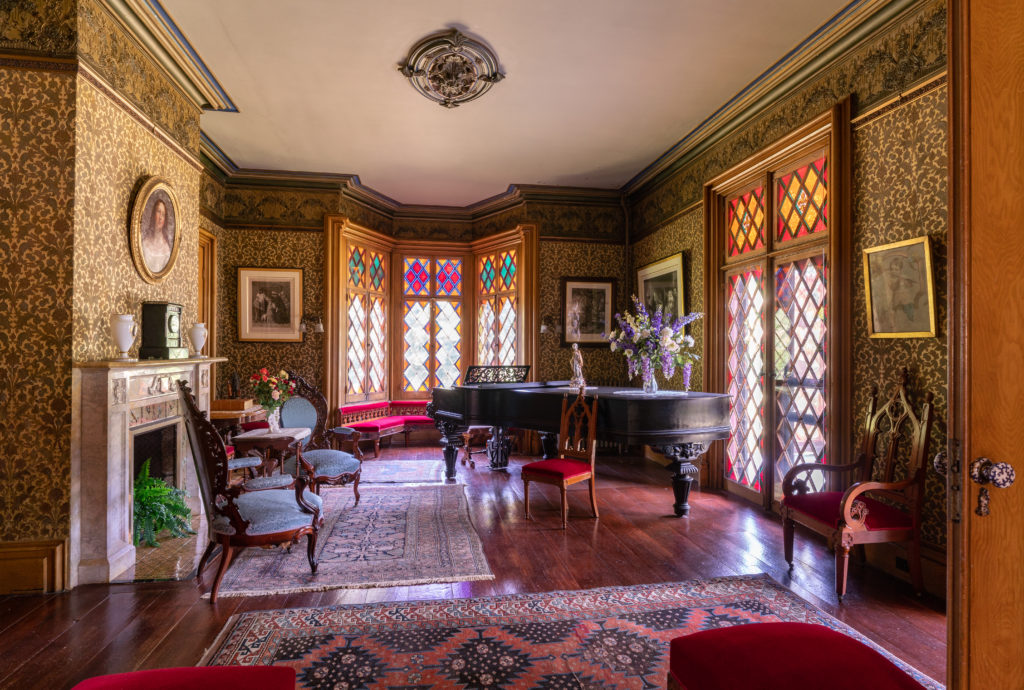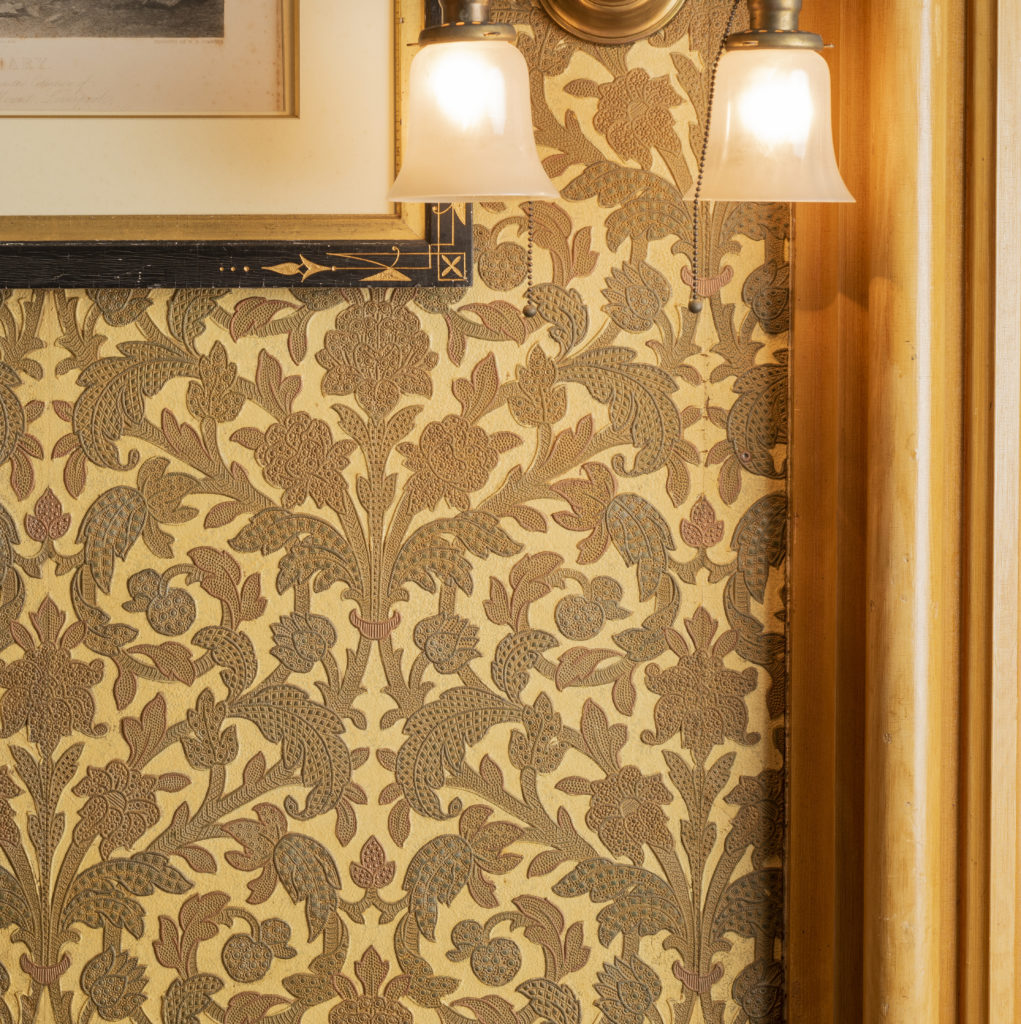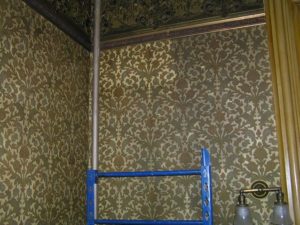 Roseland Cottage
Roseland Cottage
The North Parlor

The north parlor is a mirror image of the south parlor, with the same stained glass and other physical attributes. Double parlors like these were common in Gothic Revival houses. The pocket doors between the parlors could be closed, separating them into two distinct rooms which allowed for privacy and divided spaces in which to socialize. This was the era of separate spheres—men and women often socialized apart from one another.
As in the other public rooms, Lincrusta-Walton was installed in the north and south parlors in the 1880s. While other rooms in Roseland Cottage have Lincrusta wallcovering that has three parts, a dado paper, fill, and frieze, the parlors were installed without the dado, a style that was more fashionable in the 1890s. For more information on the Lincrusta, see Architecture, Design, & Style: Interiors.


As part of a major preservation project in the early 2000s, the lincrusta was cleaned, stabilized, and repaired where necessary. The most striking contrast, before and after cleaning, was in the parlors, as this photo shows. For more information on preservation of the Lincrusta, see Preservation: Interior.